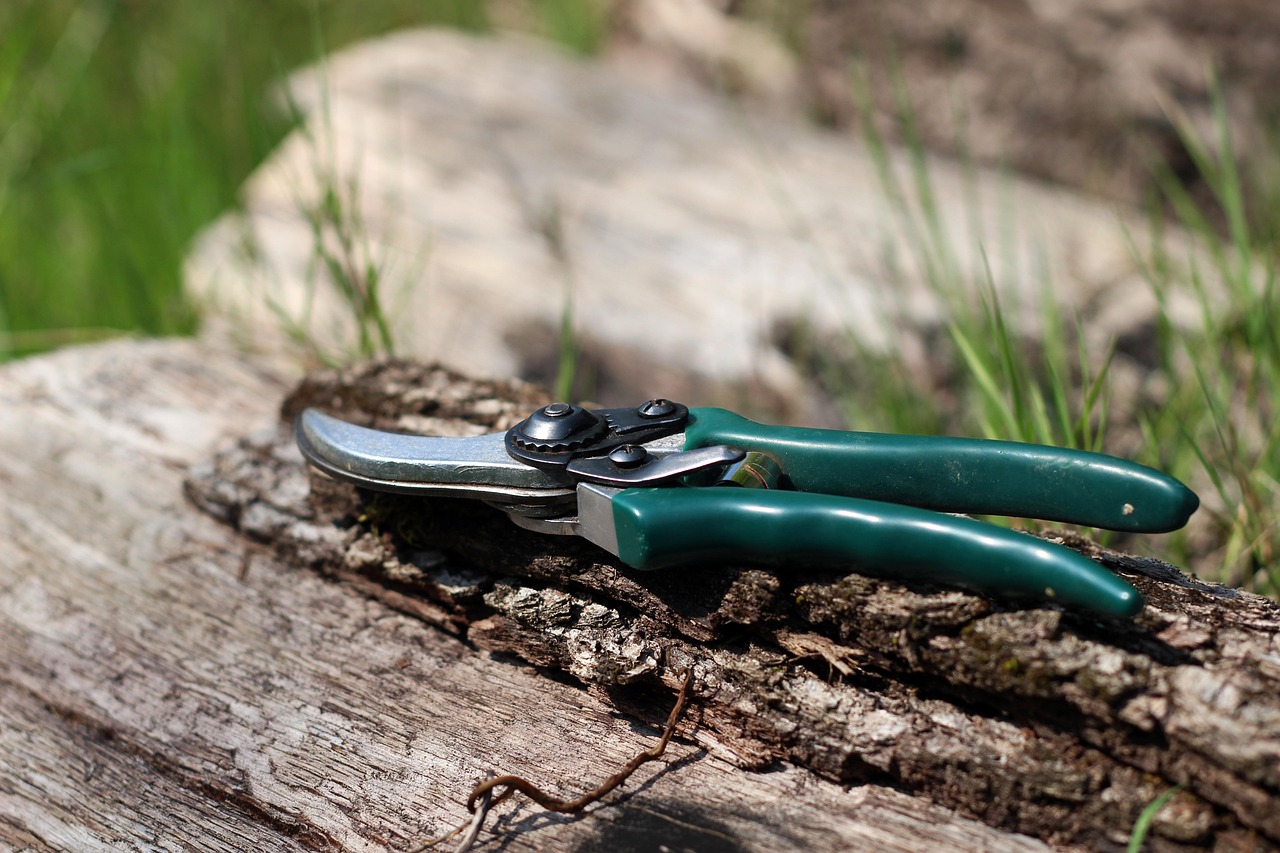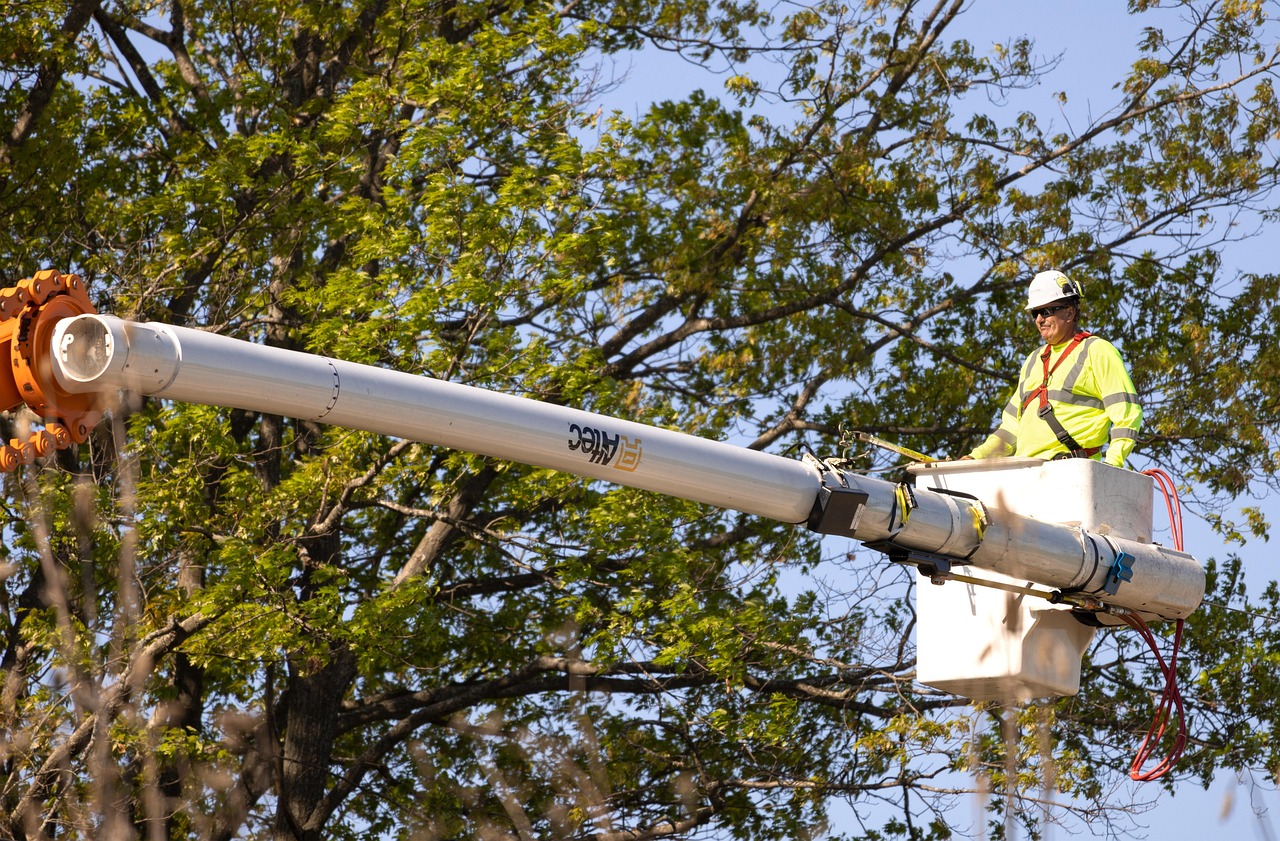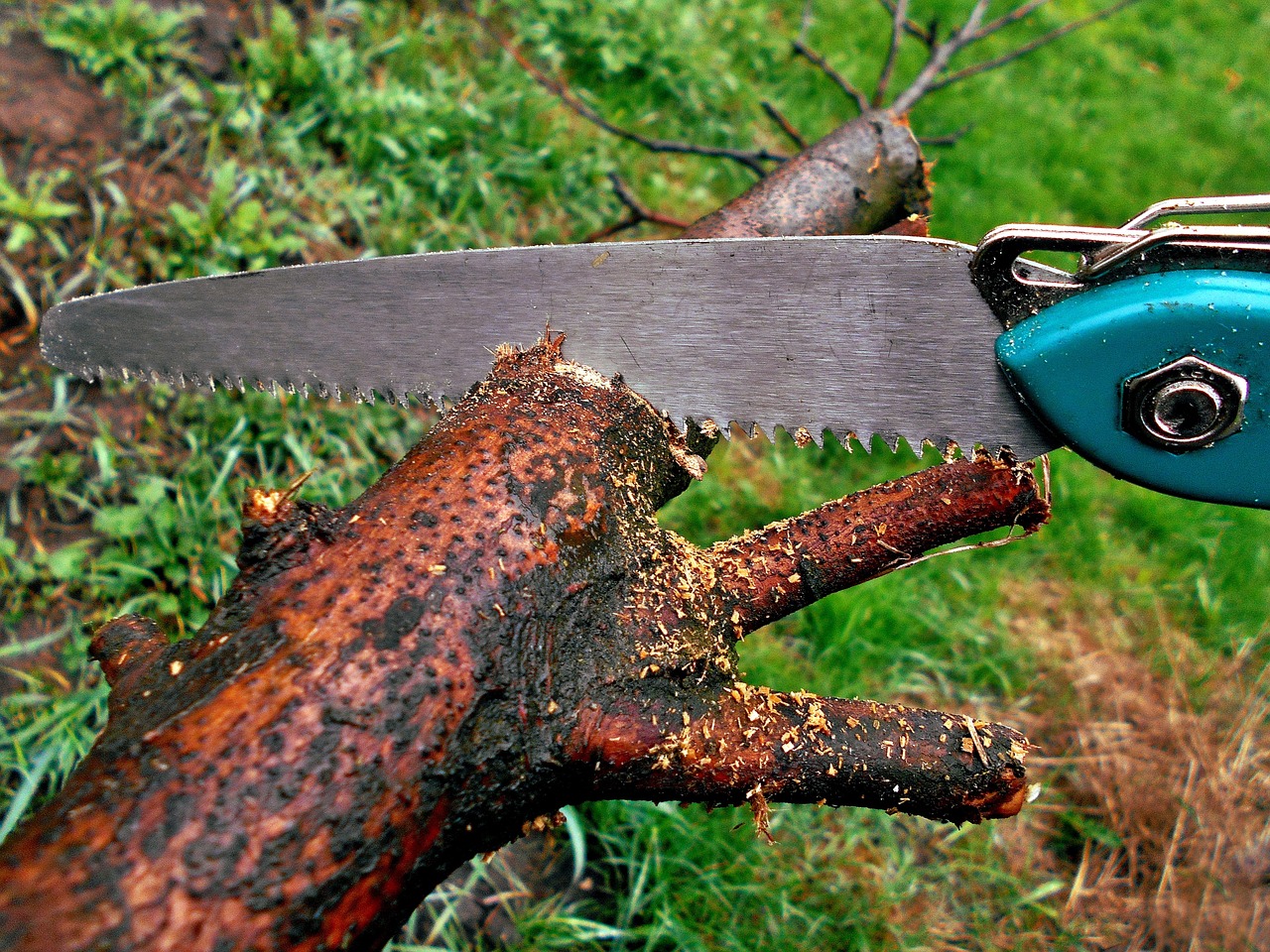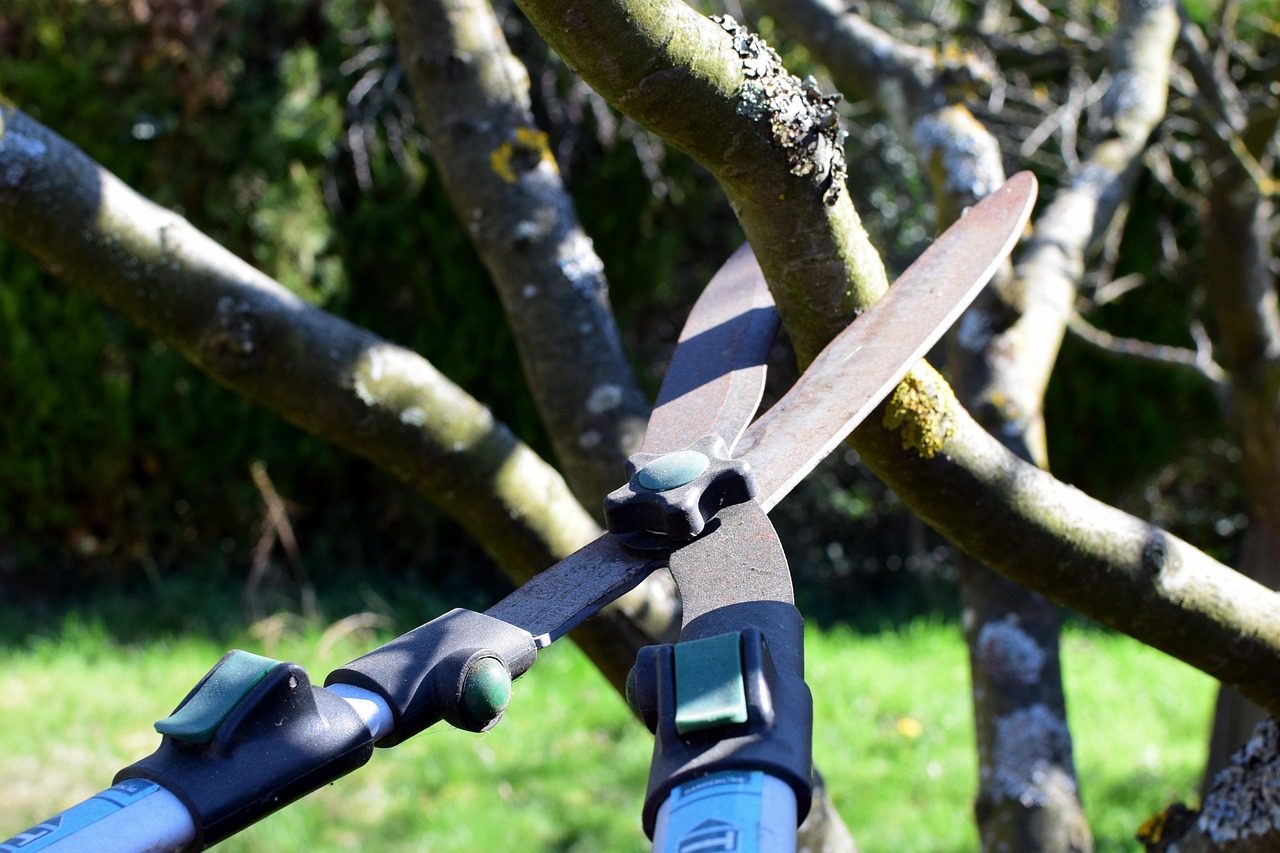To effectively prune young trees, avoid common mistakes such as cutting too much at once, failing to understand tree growth patterns, and neglecting to use proper tools. These errors can hinder a tree’s development and lead to long-term damage.
Pruning young trees is an essential practice for promoting healthy growth and shaping their future structure. However, many inexperienced gardeners and landscapers make critical mistakes that can adversely affect the trees they are trying to nurture. Understanding the right techniques and timing can make a significant difference in the long-term health of your trees.

Young trees are particularly vulnerable during their formative years. Pruning at this stage helps establish a strong framework, allowing the tree to grow correctly. However, improper pruning can lead to issues such as stunted growth, increased susceptibility to disease, and structural weaknesses. Recognizing common pitfalls is the first step in effective tree care.
Common Mistakes When Pruning Young Trees
There are several common mistakes that individuals often make when pruning young trees. Understanding these errors can help you avoid them and ensure your trees grow strong and healthy. Below are some of the most frequent pitfalls:
- Over-Pruning: Cutting away too much foliage can stress the tree. It is essential to remove only what is necessary.
- Ignoring Tree Species: Different species have unique growth patterns and requirements. Not considering these can lead to improper pruning techniques.
- Pruning at the Wrong Time: Timing is critical. Pruning during the wrong season can harm the tree’s growth cycle.
- Failure to Use Proper Tools: Using dull or inappropriate tools can damage the tree and lead to infection.
- Neglecting Tree Structure: Failing to maintain a strong central leader can result in weak branching and poor overall shape.
Each of these mistakes can have lasting effects on a young tree’s health and development. To further illustrate these points, consider the following table that outlines each common mistake along with its potential consequences and solutions.

| Mistake | Consequences | Solutions |
|---|---|---|
| Over-Pruning | Stressed tree, reduced growth. | Limit pruning to essential branches. |
| Ignoring Tree Species | Poor growth response. | Research species-specific pruning needs. |
| Pruning at the Wrong Time | Interference with growth cycles. | Prune during the appropriate season. |
| Failure to Use Proper Tools | Tree damage; increased risk of disease. | Use sharp, clean tools for pruning. |
| Neglecting Tree Structure | Weak branches; poor shape. | Maintain a strong central leader. |
Certain practices can enhance your approach to pruning. For instance, always assess the tree before making any cuts. Look for branches that are crossing or rubbing against each other, as these can create wounds that invite pests and diseases. Additionally, focus on creating a balanced canopy that allows sunlight to reach all parts of the tree.
When pruning, remember that less is often more. Young trees need ample foliage to photosynthesize effectively. Removing too many leaves or branches can hinder their ability to produce energy, leading to slower growth and increased vulnerability. Always prioritize removing any dead or diseased wood first before addressing structural issues.
Moreover, consider using a technique known as “heading back” sparingly. This method involves cutting back a branch to a bud or lateral branch. While it can encourage bushier growth, overuse can lead to excessive sprouting and a cluttered appearance. Instead, focus on thinning cuts that remove entire branches while maintaining the tree’s overall shape.

In terms of timing, late winter or early spring is often considered the best time for pruning most deciduous trees. This period allows for easy visibility of the structure without leaves obstructing your view. However, always check specific species guidelines as some trees may require different timing based on their growth cycles.
Finally, after pruning, monitor your tree’s recovery closely. Ensure it receives adequate water and nutrients during its growing season. Proper care following pruning will support healing and foster healthy new growth.
Understanding Tree Growth Patterns
To effectively prune young trees, it is vital to understand their growth patterns. Trees exhibit different growth habits based on species, age, and environmental conditions. Recognizing these patterns will help you make informed pruning decisions that promote healthy development.

Most trees grow in two primary ways: vertically and laterally. Vertical growth is essential for establishing height, while lateral growth contributes to the width and overall shape of the tree. Both types of growth need to be balanced through proper pruning techniques.
The Importance of Assessing Growth Habits
Before pruning, assess the specific growth habits of the tree species you are working with. Some trees have a natural tendency to grow tall and slender, while others may spread wide with multiple branches. Understanding these characteristics can help you determine how much to cut and where to focus your efforts.
Here are some common growth habits among various tree types:
- Pyramidal Growth: Trees like pines and spruces often develop a conical shape. Pruning should aim to maintain this form.
- Round Growth: Trees such as maples or oaks tend to have a rounded canopy. Focus on thinning branches to allow light penetration.
- Vase-Shaped Growth: Species like elms and cherries develop an open center. Pruning should encourage outward branch growth for better air circulation.
Tools and Techniques for Pruning
The tools you use can significantly affect the outcome of your pruning efforts. Having the right equipment helps ensure clean cuts, which promote healing and reduce the risk of disease. Below are some essential tools and techniques for effective pruning.
Essential Pruning Tools
Here are some commonly used tools for pruning young trees:
- Hand Pruners: Ideal for small branches up to ¾ inch thick. They provide precision and control.
- Loppers: Suitable for larger branches up to 2 inches thick. They offer more leverage and reach.
- Saws: For branches thicker than 2 inches, a pruning saw is necessary. Ensure it has sharp teeth for clean cuts.
- Pole Pruners: Useful for reaching high branches without a ladder. They typically have a saw blade and pruner combined.
- Gloves and Safety Glasses: Always wear protective gear to shield against injury from sharp tools and falling debris.
Pruning Techniques
Utilizing the correct techniques during pruning can enhance the tree’s health and shape. Here are some effective methods:
- Thinning Cuts: These involve removing entire branches back to their origin. This method opens up the canopy and promotes better air circulation.
- Heading Cuts: Use these sparingly to encourage bushier growth by cutting back a branch to a bud.
- Reduction Cuts: These reduce the length of a branch while maintaining its structure. It’s useful for controlling size without entirely removing branches.
The Role of Timing in Pruning
The timing of your pruning activities can greatly influence the effectiveness of your efforts. Different species react differently based on when they are pruned. Here are some key considerations regarding timing:
- Winter Dormancy: Most deciduous trees benefit from pruning during their dormant period in late winter or early spring before new growth begins.
- Post-Bloom Pruning: For flowering trees, prune after blooming to avoid cutting off buds that will produce flowers in the upcoming season.
- Avoiding Fall Pruning: Pruning in late fall can expose fresh cuts to winter weather, increasing the risk of damage and disease.
Recognizing Signs of Stress in Young Trees
Monitoring young trees for signs of stress is crucial after pruning. Stress can manifest in various ways, including wilting leaves, discoloration, and stunted growth. Early recognition allows for timely intervention, ensuring the tree recovers effectively.
Common signs of stress include:
- Leaf Drop: Excessive leaf drop after pruning may indicate that the tree is struggling.
- Browning Edges: Leaves with brown edges or spots suggest water stress or disease.
- Pest Infestation: Look out for insects or webs that could indicate a weakening tree.
If you notice these signs, take immediate action by adjusting watering practices or consulting an arborist for further advice on treatment options.
The Benefits of Proper Pruning
When done correctly, pruning young trees has several benefits that extend beyond aesthetics. Healthy pruning practices support:
- Improved Structure: Establishing a strong framework helps ensure stability as the tree matures.
- Enhanced Growth: Properly pruned trees typically experience increased vigor and growth rates.
- Disease Prevention: Removing dead or diseased wood minimizes the risk of infections spreading through the tree.
Investing time in understanding tree growth patterns, using appropriate tools, mastering pruning techniques, and recognizing signs of stress can lead to thriving young trees. This attention to detail fosters a healthy environment for your trees to flourish and contribute positively to your landscape.
Advanced Pruning Techniques for Young Trees
Once you have mastered the basics of pruning young trees, you may want to explore more advanced techniques. These methods can further enhance the health, structure, and aesthetics of your trees. Understanding when and how to apply these techniques is essential for achieving the best results.
Layering Technique
The layering technique is beneficial for creating a more natural look and promoting growth in trees that tend to grow too tall or upright. This method encourages lower branches to develop, which helps maintain a balanced canopy. Here’s how to perform layering:
- Select a low branch that shows potential for growth.
- Gently bend the branch towards the ground, but do not break it.
- Prepare a small trench in the soil where the branch will lay.
- Cover the bent branch with soil, leaving the tip exposed.
- Water the area regularly to encourage rooting.
This technique can lead to the formation of new roots along the buried section of the branch, ultimately allowing you to propagate new trees if desired.
Crown Thinning
Crown thinning involves selectively removing branches throughout the crown of the tree. This technique is particularly useful for trees that have dense foliage. By selectively thinning the crown, you enhance light penetration and air circulation, which contributes to overall tree health.
- Choose branches: Target branches that are crossing, crowded, or growing towards the center.
- Make clean cuts: Ensure that cuts are made at the branch collar to promote healing.
- Aim for balance: Remove enough branches to allow light and air circulation without compromising the tree’s shape.
Common Species-Specific Pruning Strategies
Different tree species often require specific pruning strategies due to their unique growth patterns and structures. Understanding these requirements can prevent mistakes and enhance tree health.
Pruning Fruit Trees
Fruit trees usually require a combination of shaping and thinning for optimal fruit production. Here are some key strategies:
- Open Center Pruning: This method creates a vase-like shape that allows sunlight to reach all parts of the tree, promoting fruit development.
- Sucker Removal: Regularly remove suckers or water sprouts that emerge from the base or trunk, as they divert energy from fruit production.
- Timing: Prune fruit trees while dormant in late winter to minimize stress and maximize fruit yield in the growing season.
Pruning Ornamental Trees
Ornamental trees are primarily pruned for aesthetic reasons rather than fruit production. Here are some specific pruning techniques for ornamental trees:
- Shaping Cuts: Use selective cuts to maintain the desired shape while allowing natural growth.
- Deadwooding: Regularly remove dead or damaged branches to enhance appearance and prevent disease.
- Seasonal Adjustments: Some ornamental trees benefit from light pruning in early spring before new leaves emerge.
Potential Risks of Improper Pruning
While pruning can greatly benefit young trees, improper techniques can lead to several risks. Awareness of these potential issues can help you refine your approach and ensure that your trees thrive.
Disease Introduction
Poor pruning practices can create wounds that expose young trees to diseases and pests. To minimize this risk, always use clean, sharp tools and make cuts as cleanly as possible. Here are some additional tips:
- Sanitize Tools: Use a disinfectant solution on tools before and after use to prevent disease spread.
- Avoid Heavy Pruning: Excessive cuts can weaken a tree’s immune system, making it more susceptible to infections.
- Watch for Signs of Infection: After pruning, monitor the tree for any signs of disease or pest problems.
Structural Weakness
Improper pruning may lead to structural weaknesses in young trees. This can result in problems such as splitting or breaking during storms. To promote a strong structure:
- Aim for a Central Leader: Ensure a central leader is established early on, as this provides stability as the tree matures.
- Avoid Topping: Topping, or cutting back large branches indiscriminately, can lead to weak regrowth and instability.
- Balance Growth: Maintain an even distribution of branches around the trunk for better stability.
Seasonal Care After Pruning
The care provided to young trees after pruning is just as critical as the pruning itself. Proper aftercare supports recovery and encourages healthy new growth.
Nutrient Management
A well-balanced nutrient supply is vital after pruning. Here are strategies for managing nutrients:
- Fertilization: Apply a balanced fertilizer in early spring to support new growth following pruning.
- Soil Testing: Conduct soil tests to identify nutrient deficiencies that may need addressing.
- Mulching: Use organic mulch around the base of the tree to retain moisture and add nutrients as it decomposes.
Watering Practices
The watering regime should be adjusted based on weather conditions and the tree’s needs following pruning. Proper hydration promotes recovery:
- Deep Watering: Water deeply but infrequently to encourage roots to grow deeper into the soil.
- Avoid Overwatering: Ensure that soil drains well to prevent root rot, especially after heavy rains.
- Monitor Soil Moisture: Use a moisture meter or check soil by hand to determine when watering is necessary.
By understanding advanced techniques, species-specific strategies, potential risks, and seasonal care routines, you can ensure that your young trees not only survive but thrive in their environment.
Additional Considerations for Pruning Young Trees
As you apply the techniques and strategies discussed, there are additional considerations to keep in mind that can enhance your pruning efforts. Recognizing external factors and integrating them into your care regimen can promote healthier trees and better growth outcomes.
Environmental Factors
The environment plays a crucial role in the health of young trees. Here are some environmental aspects to consider:
- Sunlight Exposure: Ensure that the tree receives adequate sunlight, which is vital for photosynthesis. Pruning should not obstruct light penetration, especially for lower branches.
- Wind Protection: Strong winds can damage young trees. Positioning trees in sheltered locations or using windbreaks can help maintain their integrity.
- Soil Quality: Healthy soil rich in organic matter supports root development and overall tree health. Consider amending the soil as necessary before or after planting.
Community and Local Resources
Engaging with local resources can provide valuable support and information for your pruning practices. Consider these options:
- Arborist Consultations: Professional arborists can offer personalized advice based on the specific conditions of your landscape and tree species.
- Extension Services: Many universities offer extension services that provide educational resources on local tree care practices and pest management strategies.
- Workshops and Community Programs: Participate in local workshops that focus on tree care and maintenance to enhance your skills and knowledge.
Documentation and Observation
Keeping track of your pruning activities and observing changes in your trees can lead to better practices in the future. Here are ways to document your efforts:
- Pruning Logs: Maintain a record of when and how you prune each tree, including dates, techniques used, and observations about tree health.
- Photographic Records: Take before-and-after photos to visually assess the impact of your pruning over time.
- Growth Monitoring: Regularly assess the growth of your trees to determine the effectiveness of your pruning strategies.
Final Thoughts
Pruning young trees is both an art and a science. By avoiding common mistakes and employing sound techniques, you can ensure that your trees develop strong structures, promote healthy growth, and thrive in their environments. Understanding specific species needs, timing, and advanced techniques will enhance your tree care practices significantly.
The key takeaways from this article include the importance of recognizing growth patterns, using proper tools, and implementing species-specific strategies. Additionally, being aware of environmental factors, engaging with community resources, and documenting your progress can greatly influence the health of your trees.
Ultimately, nurturing young trees through proper pruning not only enhances their beauty but also contributes to a sustainable and vibrant ecosystem. By investing time and care into your pruning practices, you ensure that these young trees will grow strong, providing shade, beauty, and ecological benefits for generations to come.
